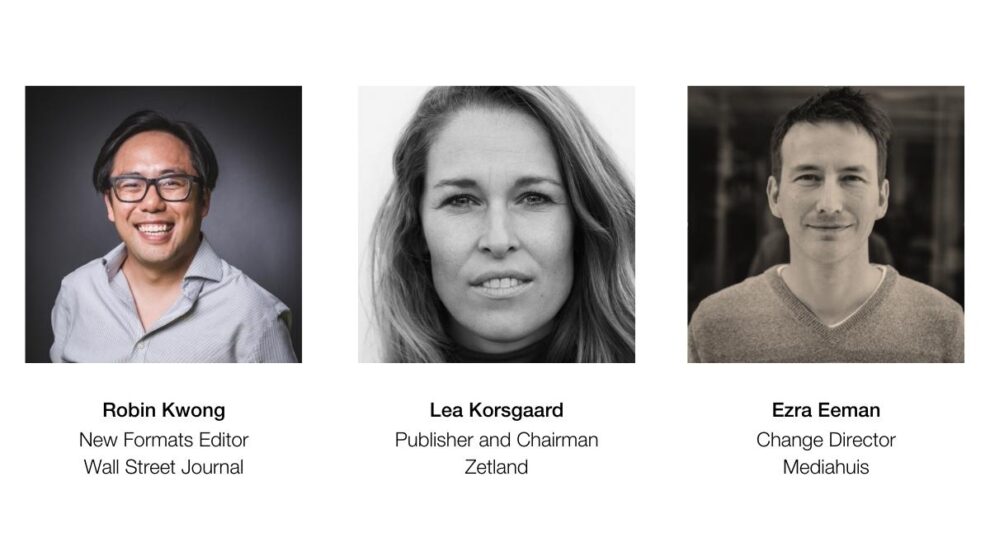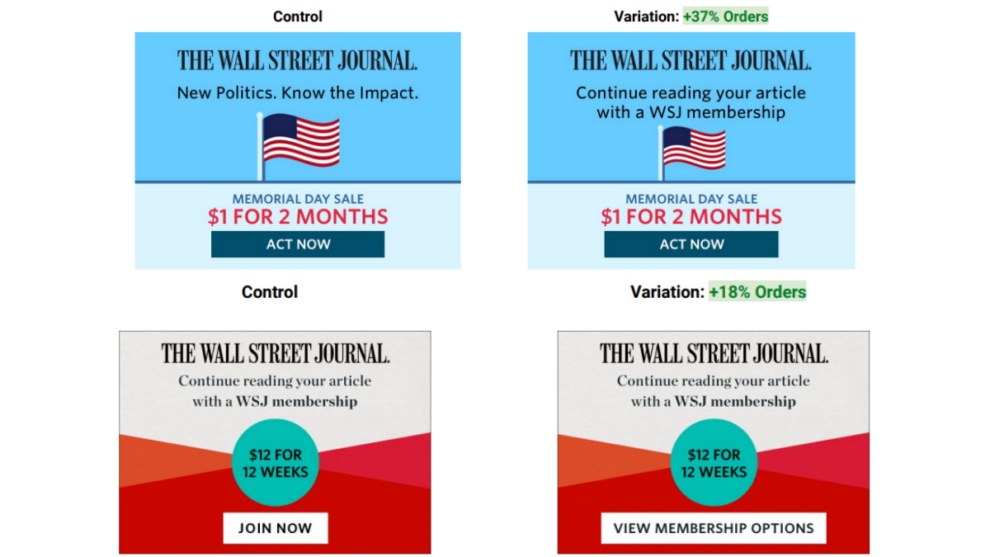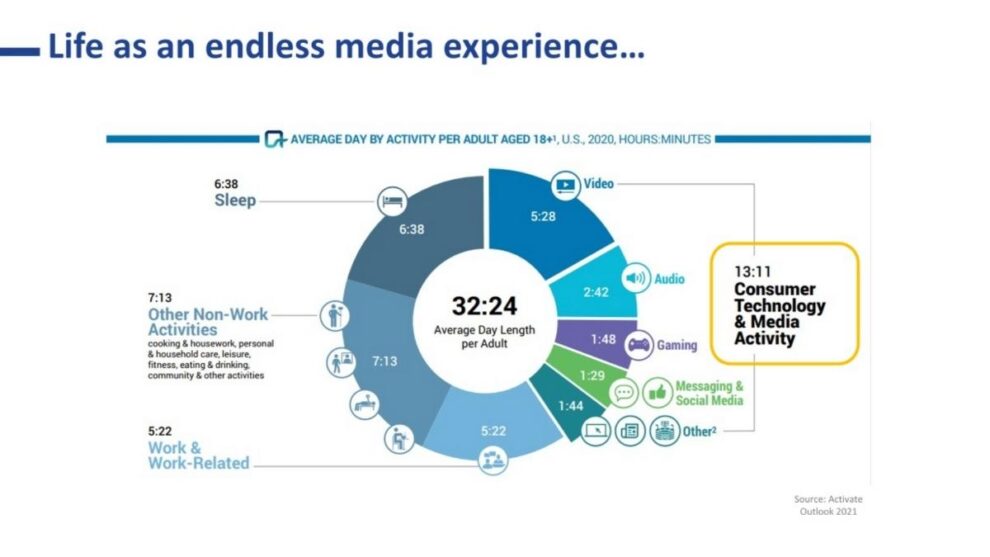Blog
What we learnt interviewing 3 International Journalism Festival Speakers
Next week’s International Journalism Festival marks a significant moment in the return to physical events following the pandemic. Industry figures from across the world will gather in the Italian city of Perugia to share insights and gather new ideas. In the run-up to the festival, we interviewed Ezra Eeman, Lea Korsgaard and Robin Kwong about what to expect and the state of the industry.

If you’re heading to Perugia and keen to network, don’t hesitate to reach out!
Newsroom innovation in a post-pandemic ecosystem
The return to non-remote life is not just a change for events, but also for newsrooms. Ahead of his participation on the panel “Newsroom innovation in a post-pandemic ecosystem”, I spoke with Ezra Eeman, Change Director at Mediahuis.
During the pandemic, hybrid working became the new normal. The challenges that faced newsrooms accelerated their work and digital progression. Ezra’s panel will focus on how newsrooms can leverage and build on this progress to ensure they do not relapse into their print-focused ways of doing things. This includes not just technology but other more practical issues like working towards multiple deadlines rather than one print deadline.
It is not just in mindset where these shifts were witnessed, but even in the way meetings were held and daily approaches taken. One promising outcome Ezra witnessed at Mediahuis during the pandemic was the greater use of data by journalists and the newsroom. Greater focus on data has shifted the newsrooms’ focus and provided them with more willingness to experiment and hypothesise. This makes successes and failures measurable, and the details will be fascinating to hear in Perugia.
How to decide how to do new things (or not) in newsrooms
Robin Kwong, New Formats Editor at The Wall Street Journal, who will speak on the panel “How to decide how to do new things (or not) in newsrooms” explained that newsroom innovation and experimentation start with looking at your overall strategic goal. This goal will ultimately be aligned with north star metrics and the focus of senior leaders.
This is the most effective place to start. At each step you can look at how each stage relates back to the goal. Beyond this, specifics differ for every team and experiment, but Robin warned that most experiments will not be successful. However, teams should be ready in case an experiment does go well.

Whilst the Wall Street Journal is a single title house, Mediahuis is a publisher with many titles so approaches differ. Therefore, we also touched on approaches to experimentation with Ezra. He explained that their experimentation starts with defining a vision. The beauty of working with many titles is that experimentation can start at any level and size of newsroom. If there is success, it can be adopted across other titles. Some decisions will be taken at group level, but experimentation can have big results for titles at Mediahuis.
Keeping you audience at the centre of your thoughts
Since the shift in focus to digital subscription models, publishers have had to become more audience orientated. Publishers have gone about this in many ways from customer obsession to visiting subscribers in person. A case that will be presented at the International Journalism Festival comes from Danish publisher Zetland.
When launching Zetland, Publisher and Chairperson Lea Korsgaard said the natural move was to focus on the audience. One way to do this was choosing to refer to their readers as “members”. This is a small but powerful gesture. It signifies Zetland‘s desired close relationship with the reader, much like we have seen with The Guardian. Placing them at the centre also means that it is easier to solve problems.
Another interesting point that Lea highlighted was that publishers don’t often realise how easy it is to speak with their audiences. Zetland frequently reach out to their members to get critique and alternative perspectives on things. This is something we have also seen in the industry with other slow news outlets like Tortoise Media and their thinkins. All this information helps publishers to ultimately become more useful and give audiences a product that they want.
Zetland understand the importance of publishing their news in Danish so that they can provide a service to their national community. Lea explained that Danes needs to have Danish focused news in their mother tongue to be informed about issues all Danish people can feel and to be able to talk to each other. This, for her, is just as important as global news as we are quickly becoming global humans.
Formats for the future
Finding the correct format for future news products is something we at Twipe are passionate about. With recent moves in the industry like the launch of FT Edit and the rebirth of newsletters, edition formats really do seem to be taking off.
Zetland understood the important principles of curation and a finite experience. So, they chose to offer “insights rather than breaking news” by publishing 7 stories a week. The key decision behind this was because Lea believes that we are drowning in a digital and non-stop news world, so people have few chances to focus on what is meaningful to spend attention on. In their initial research prior to launching, people told Zetland that they needed something which gave them the most popular news at a pace they can keep up with. The edition approach is a great solution as people don’t have time to read every piece of continuously updating news. Zetland’s audio function also makes their article easy to consume on the go allowing for multitasking.

Newsletters have received lots of investment and the rise of Substack has coincided with this. Robin added that this is because newsletters let publishers have a direct relationship with their readers. At the Wall Street Journal, this is particularly the case with more personal and intimate newsletters. Newsletters can be in many formats like columns, roundups and personalities and subscribers really can choose what they want. The newsletter format also benefits from a simple delivery mechanism, with Robin suggesting newsletters are great in a subscription business.
Another powerful format for Robin, which receives less attention, is rankings. Rankings are a great way to get another use out of data and formulate it in a way people can understand and enjoy. At the Wall Street Journal, Robin works to make ranking data interactive such as with their college rankings where people can choose the factor they want data ranked on.
Is there hope for the future of journalism?
The viability of a sustainable future for journalism is one positive that has come out of the pandemic. I asked Ezra, Lea and Robin whether they believed that there was hope for the future of journalism, and all said yes.
The fact that people need fact-based and reliable news now more than ever gave hope to Ezra, who also highlighted that the challenge for the future is to make progress in the business side of journalism.
For Robin, journalism’s future role is to help people navigate the content on offer. Despite being a volatile industry, Robin told us there was hope.
A successful move to the digital world was the reason Lea was hopeful for the future, and with the plethora of great content on offer she expects success to continue in journalism.
Don’t hesitate to reach out for a coffee with me in Perugia on LinkedIn, Twitter or via email.
You can learn more about the topics discussed at the panels below:
Thursday, 7th April
- “From a passive mass audience to a vibrant community: a how-to panel”
- “How to decide to do new things (or not) in newsrooms”
Friday 8th April
“Newsroom innovation in a post-pandemic ecosystem”
Saturday 9th April
- “New and how to use it: where does the audience fit it?”
- “Reader revenue models: how to succeed beyond the English language”
Other Blog Posts

Stay on top of the game
Subscribe to Twipe’s weekly newsletter to receive industry insights, case studies, and event invitations.
"(Required)" indicates required fields

